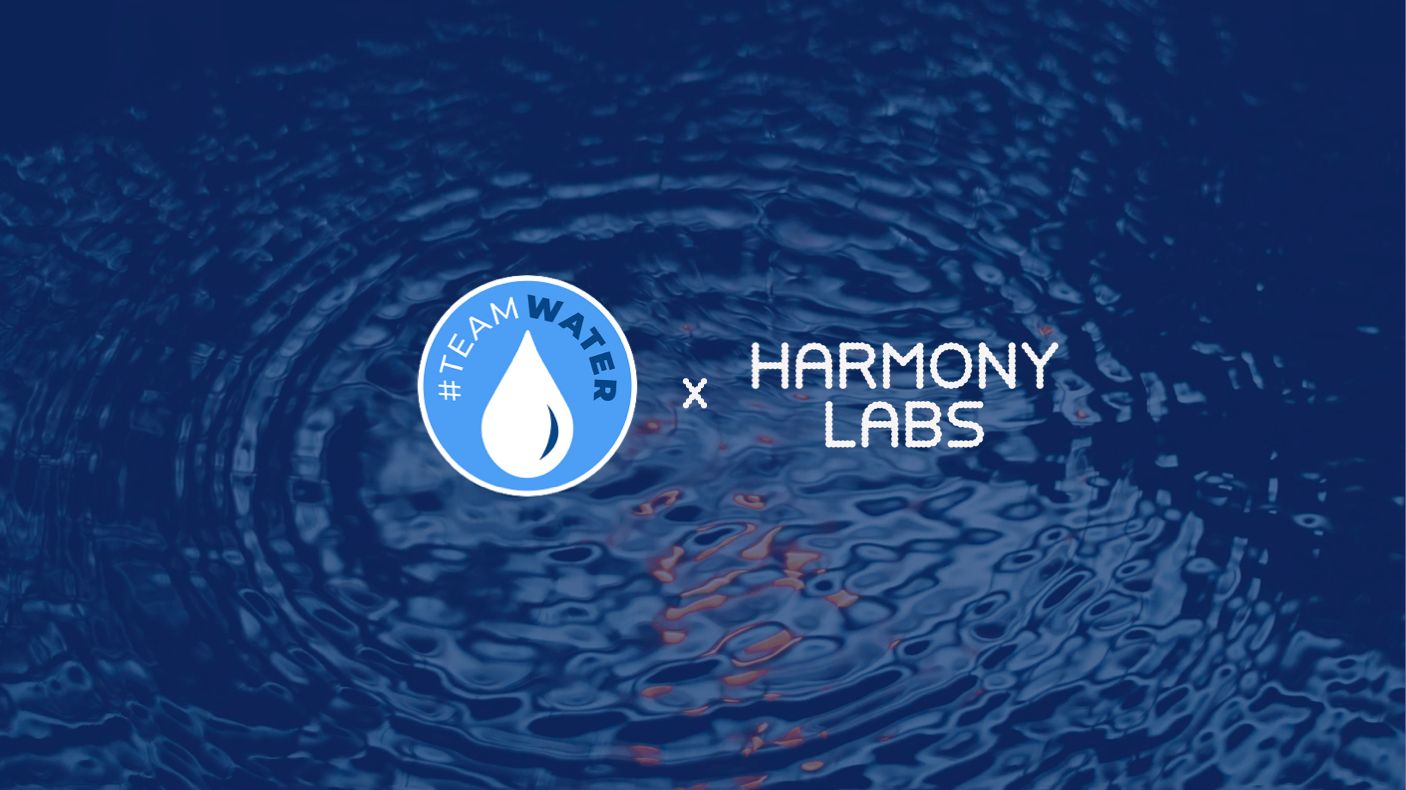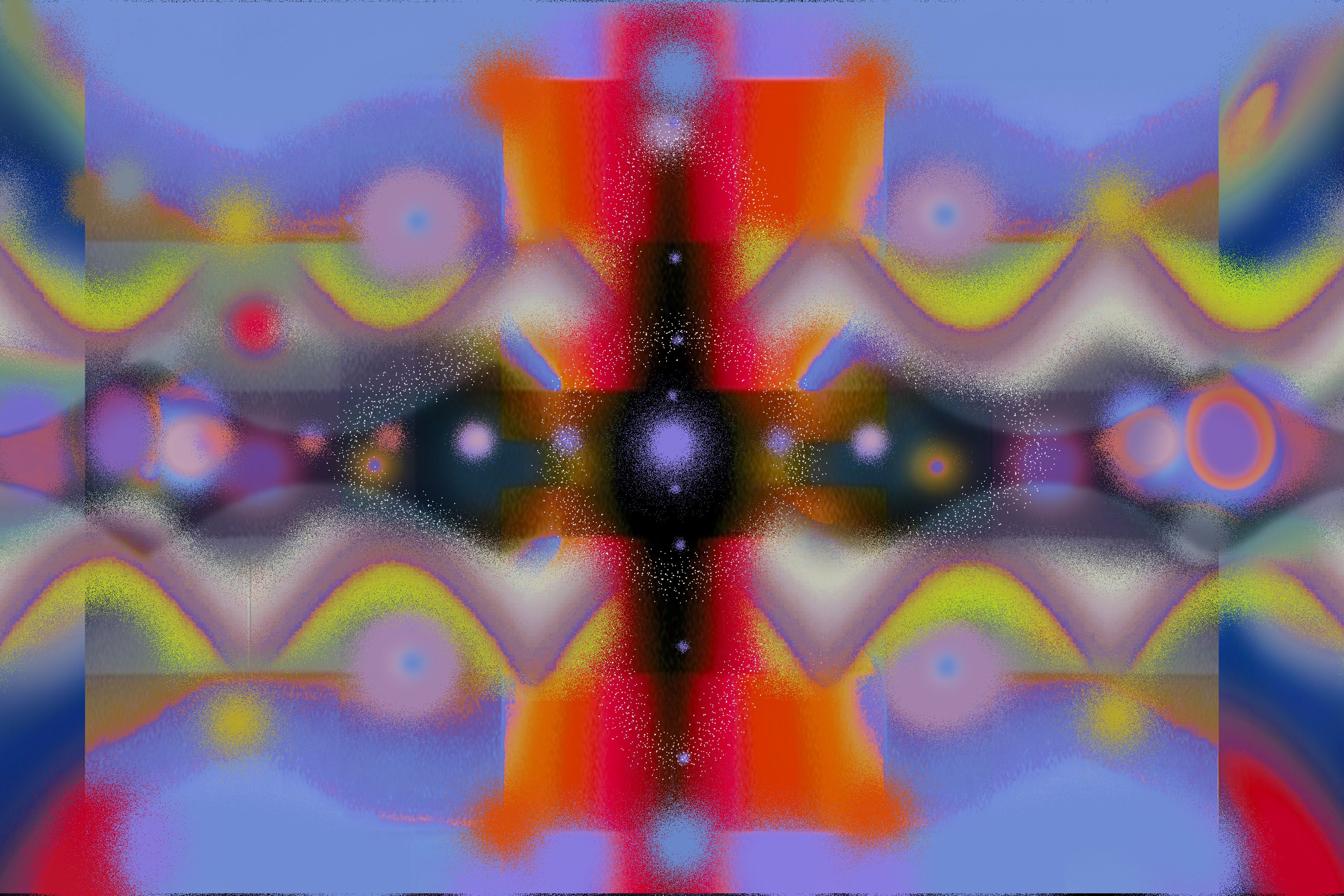Four Principles For Building Power in Media
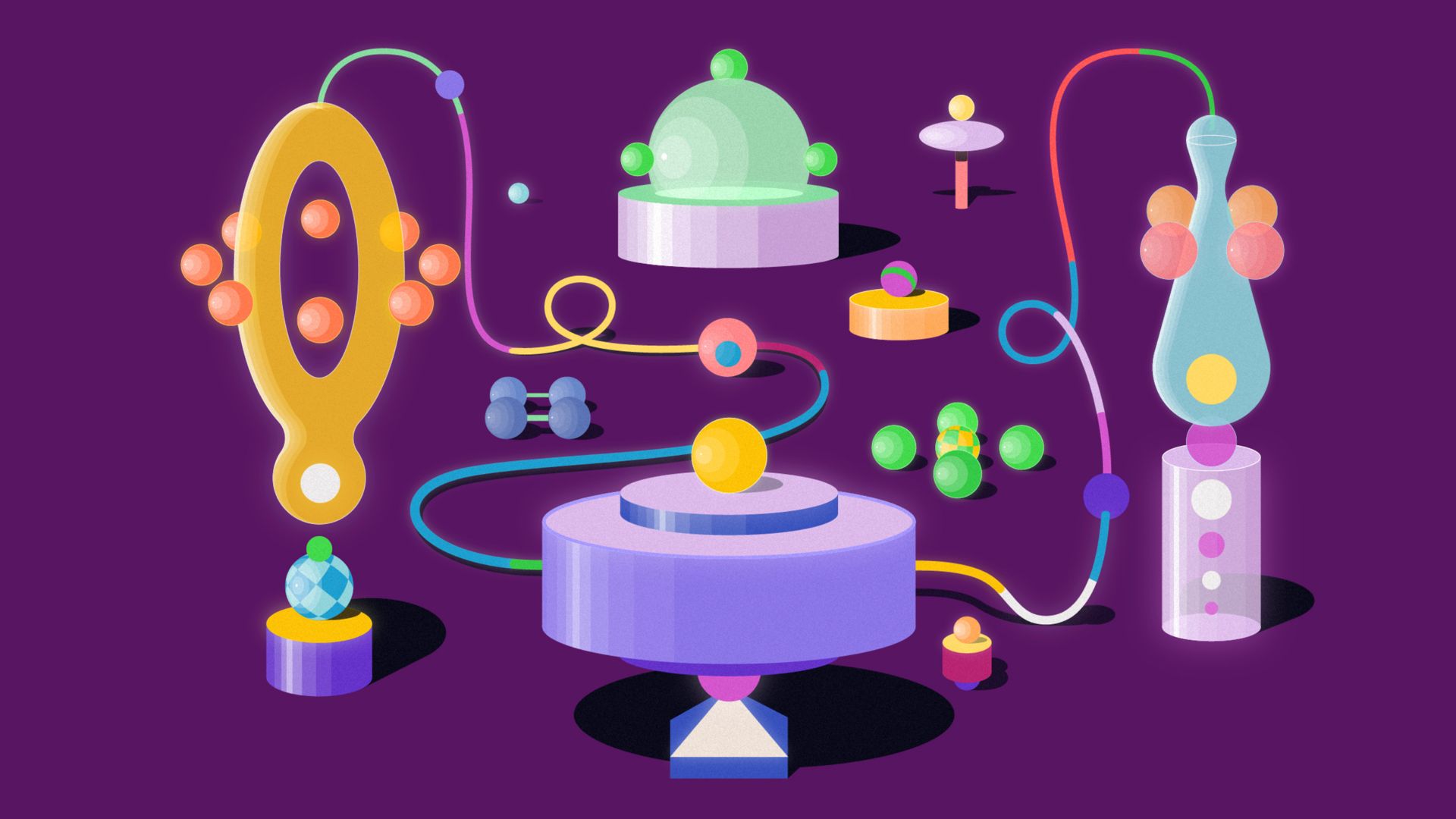

2022-01-24
Two years ago, Harmony Labs and the Bill & Melinda Gates Foundation set out to build the Narrative Observatory, a first-of-its-kind tool to support researchers and practitioners working to change narratives about poverty and economic mobility.
The work, as we envisioned it in our original white paper, was complex, highly collaborative, experimental, hard. Success was not assured. To be sure, the trail we ended up blazing through this work was dense with occasional setbacks and failures, and big, difficult learnings — which, in the end, only strengthened the Narrative Observatory.
In September 2021, the Narrative Observatory launched as a website and prototype infrastructure for data-driven cultural strategy, with a strong circle of partners and charter users committed to helping us build something that would improve outcomes in their own work, across a range of social issues, from economic mobility to racial justice, immigration, and denuclearization.

Over two years, we worked with ten charter users to discover their needs with respect to cultural strategy and media making, and to experiment with the outputs best suited to satisfy those needs. Charter users included: the Bill & Melinda Gates Foundation and their challenge grantees, the Robert Wood Johnson Foundation, Mozilla Foundation, Equis Labs, A/B Partners, Race Forward’s Butterfly Labs, NARAL, Caring Across Generations, Nuclear Threat Initiative, Jim Joseph Foundation, and United We Dream. The work we’ve done for and with these partners includes:
We started by doing bespoke audience clustering, like this work on Black audiences online for A/B Partners or this work on Latinx audiences for Equis Research, before we developed a single values-based audience segmentation, via the Bill & Melinda Gates Foundation’s poverty and economic mobility portfolio. We are now using this segmentation for most Narrative Observatory work, which provides a useful framework for ongoing learning across projects and continuous refinement.
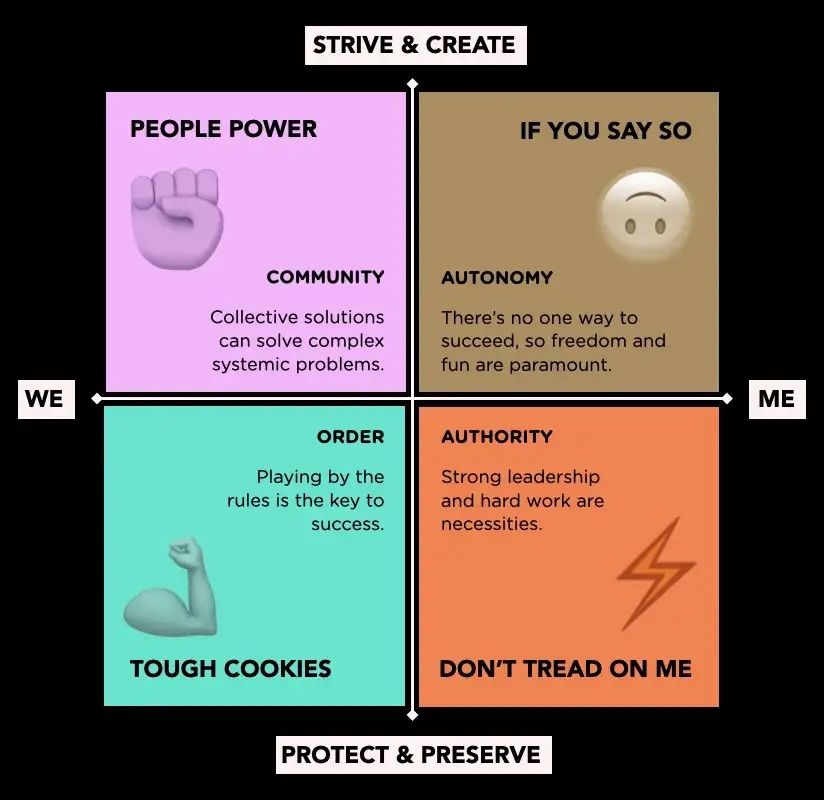 The 4 values-distinct segments around which the majority of audience research is mapped.
The 4 values-distinct segments around which the majority of audience research is mapped.
Audience profiles bring to life audience segments by describing and embodying each segment’s values, beliefs, attitudes, knowledge, and/or media behaviors. In our audience profiles, we most often use the four-quadrant values-based audience segmentation, applied explicitly in the Narrative Observatory website. We can also generate audience profiles from other audience segmentation, as in this work for NARAL using the audience segmentation from Story at Scale. We have developed many ways to bring audience profiles to life, including the search-based case studies created for NARAL and content ecosystems generated for a recent exploration of polarizing YouTube channels for EquisLabs.
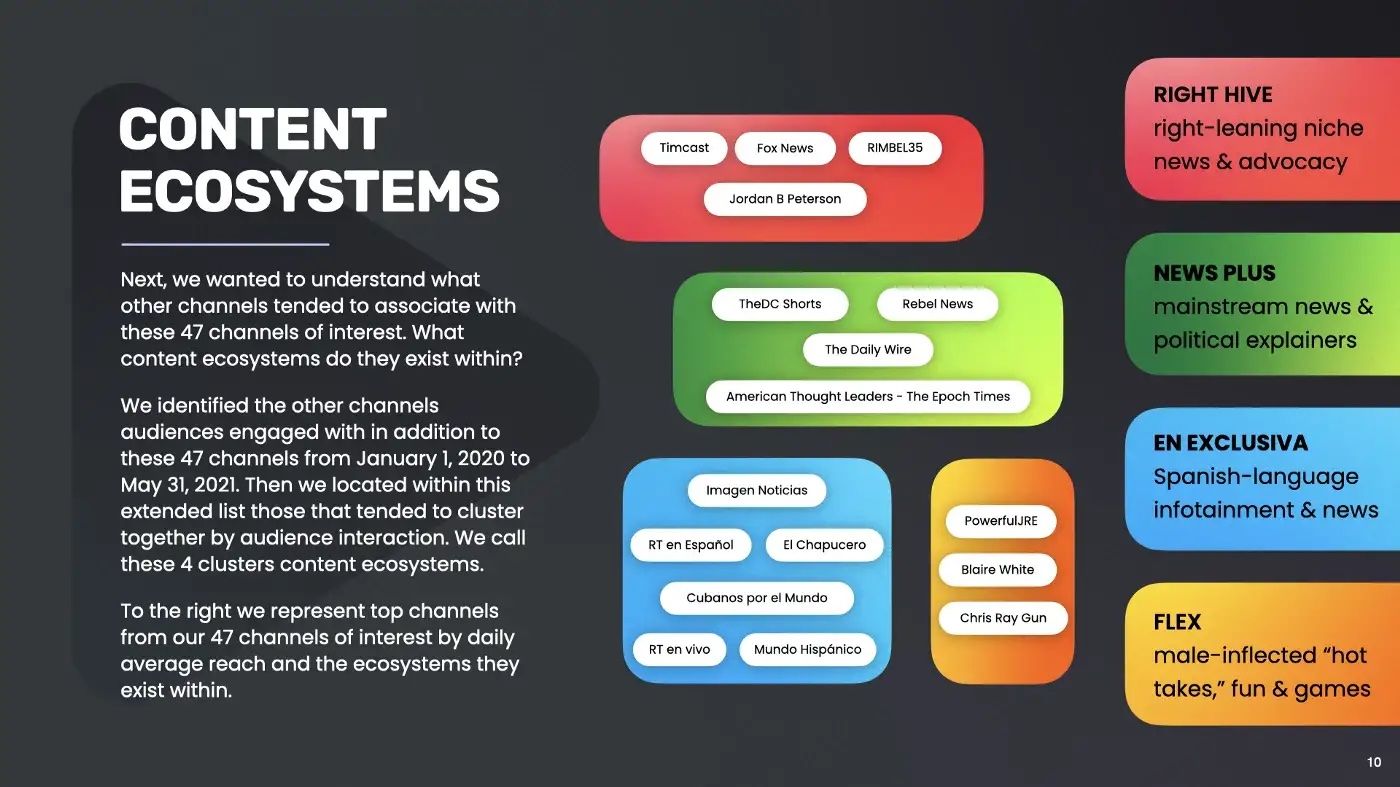 Segmented content ecosystems within Latinx YouTube consumption in work with EquisLabs.
Segmented content ecosystems within Latinx YouTube consumption in work with EquisLabs.
Narratives emerge from audiences, built and reproduced and spread from the ways people interact with stories in media. Narratives serve as atmosphere, moods that color people’s perception and influences how people create and reflect culture. Our narrative profiles are always built “bottom up,” which means we start by having annotators code media content for relevance to a particular social issue. We use annotator judgments to train a relevance model to help us determine on which media content to focus additional narrative analysis, then, through machine clustering and human decision making, are able to produce digestible sets of narratives to characterize the terrain for one or more audiences. The audience-specific narrative profile can be seen as an extension of the audience profile, as seen in this work with Mozilla about the narrative landscape surrounding AI.
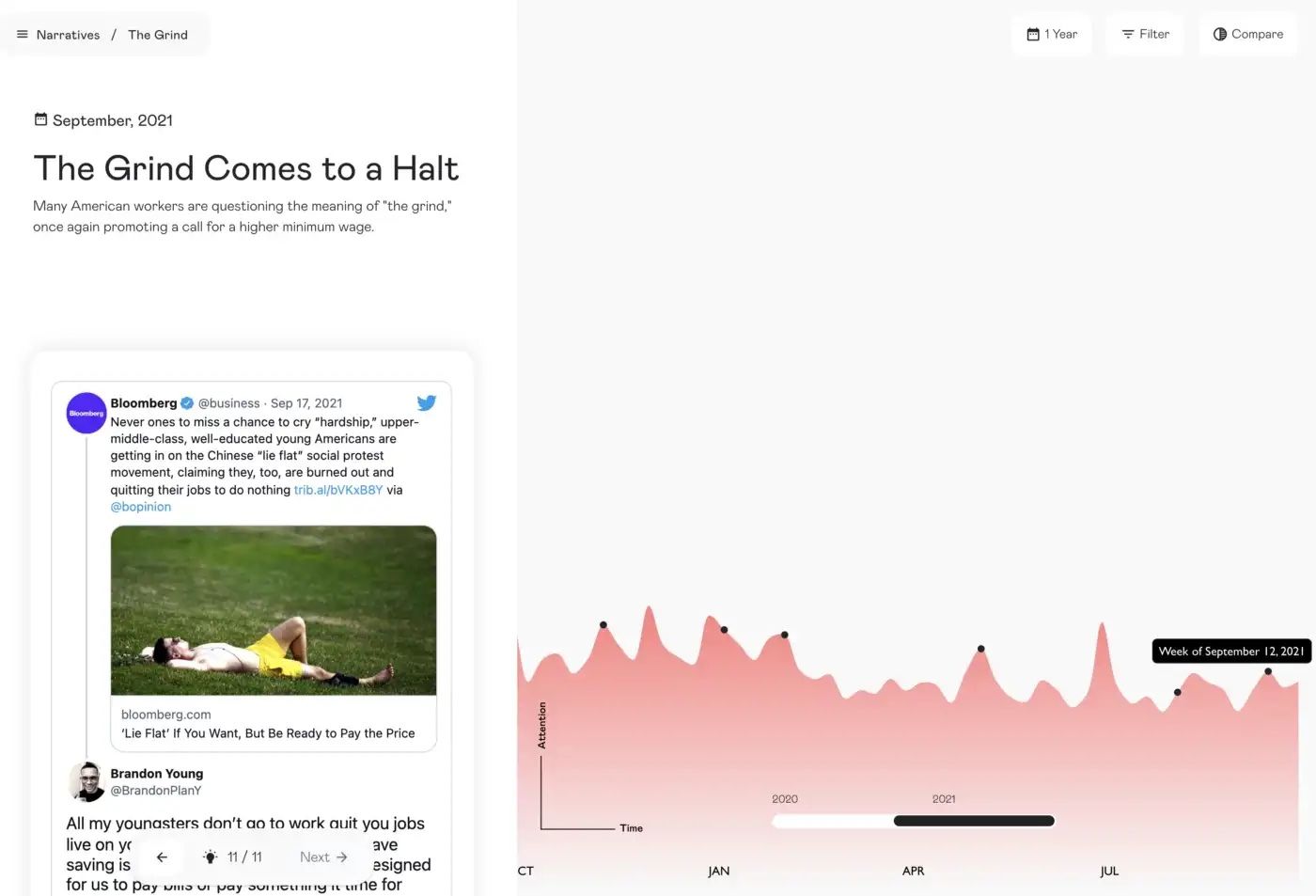 A topical and persistent narrative of “The Grind” was showcased on The Narrative Observatory website.
A topical and persistent narrative of “The Grind” was showcased on The Narrative Observatory website.
These outputs are prescriptive in nature and primarily suggests change-making intentions, identifying possible “north stars” in audiences’ current media diets toward which action and response can be directed, work that often takes the form of content briefs. Content briefs make explicit recommendations about the stories, story beats, endings, characters, worlds, tones, and/or aesthetics that are likely to produce desired responses in order to bring about some evolution in reality. The work of generating content briefs is best done in close collaboration with content creators, wherein the Harmony Labs team helps content creators form story interests and intuitions into hypotheses, which creators quickly embody in low-fidelity content, and which Harmony Labs then tests. We have done this work with cohorts of content creators including Race Forward’s Butterfly Lab, Mozilla Foundation’s Creative Media Awards program, and for Bill & Melinda Gates Foundation challenge grantees in partnership with Purpose— and also directly with creative agencies, as in our work with Nuclear Threat Initiative.
 1 of 9 creative projects from Black artists as part of Mozilla’s Creative Media Awards program.
1 of 9 creative projects from Black artists as part of Mozilla’s Creative Media Awards program.
Over the course of the project, the audience and narrative vocabulary that has been developed within the Narrative Observatory has become progressively adopted by more than a dozen organizations in their narrative and cultural work. Some examples of how we’ve seen Narrative Observatory outputs put into practice include:
Building off these early “wins,” moving forward we’re focused on continuing to innovate in our technical approach to understanding audiences relative to their place in culture; to identifying, measuring, and tracking narratives within audiences over long time scales; and to surfacing audience-specific story opportunities and threats. We’re also working closely with our partners and advisors to identify ways in which the outputs and insights generated from the Narrative Observatory might best be integrated into their overall strategy and their media making practices.
Finally, we’re always on the lookout for ways to extend this work to new issues areas and cultural domains, with new partners. If you’re interested in leveraging the Narrative Observatory for your organization, get in touch to start a conversation.
As we reflect on what we’ve accomplished and where we intend to go next, we’d also like to extend a note of appreciation and gratitude to the community that has provided critical support to this work along the way. Our work is collaborative by necessity and design and would not be possible without our funders, partners, and community. Amidst society redefining a “new normal” over the last few years, together our work evolved in scope and ambition, seeking to answer questions about our ever-evolving world and we look forward to continuing this work together in the years to come.
This blog is based on research funded in part by the Bill & Melinda Gates Foundation. The findings and conclusions contained within are those of the authors and do not necessarily reflect positions or policies of the Bill & Melinda Gates Foundation.


